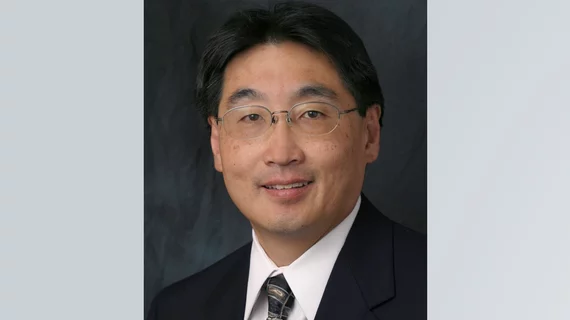Check the PACS, radiology isn’t fully prepared for AI
The hype surrounding AI in radiology is about at its peak. Soon, the field will be responsible for turning ideas into results, and those on the ground will be the ones leading the charge into a largely unknown future.
“I think AI is going to change how we practice. It’s not going to replace us, but it will change (radiology) dramatically,” said Paul J. Chang, MD, medical director of enterprise imaging at the University of Chicago, in a Feb. 21 Society for Imaging Informatics in Medicine webinar. “But the key point is how is it going to change us?”
Currently, there is an “immaturity” between machines and humans, casting radiologists as hamsters spinning on a never-ending wheel of time-consuming technology, Chang argued. This has created a burnout culture in which radiologists are barely hanging on, he added.
Radiology needs help, Chang explained, and AI can lend a hand. Clinical colleagues are asking for radiology to better quantify their value while also reducing costs. Improving efficiency is key to achieving this, and Chang “knows no way of doing this” without the use of advanced IT, which includes AI.
How can radiologists make sure AI doesn’t become another technological hamster wheel?
Drilling for gas and building roads
AI and advanced IT are comparable to a race car, Chang said, but like all cars it still needs gas and roads otherwise it’s a waste of metal and money. In the world of machine learning, he added, gas is data and metadata and roads are workflow orchestration. In other words AI algorithms are great to discuss and many can help radiologists, but current PACS are not equipped to incorporate new algorithms into a radiology workflow.
If institutions don’t adapt their current systems, AI may end up hurting more than helping radiologists.
There are many ways to augment current IT infrastructure and PACS to help accomplish this, which Chang said could be reserved for an entirely separate talk. However, he presented the service-oriented architecture used at the University of Chicago as one possible solution.
Such architecture allows machines to communicate with machines, instead of humans having to program the machines themselves. And such infrastructure can incorporate the coming changes beyond just AI, an important feature, Chang noted.
“I don’t want you to prepare for AI or machine learning,” Chang said. “You want to prepare for what’s going to come down the road and it’s not just AI. It’s advanced IT, big data, analytics and AI. You want to prepare your IT infrastructure to be able to consume all these things.”

